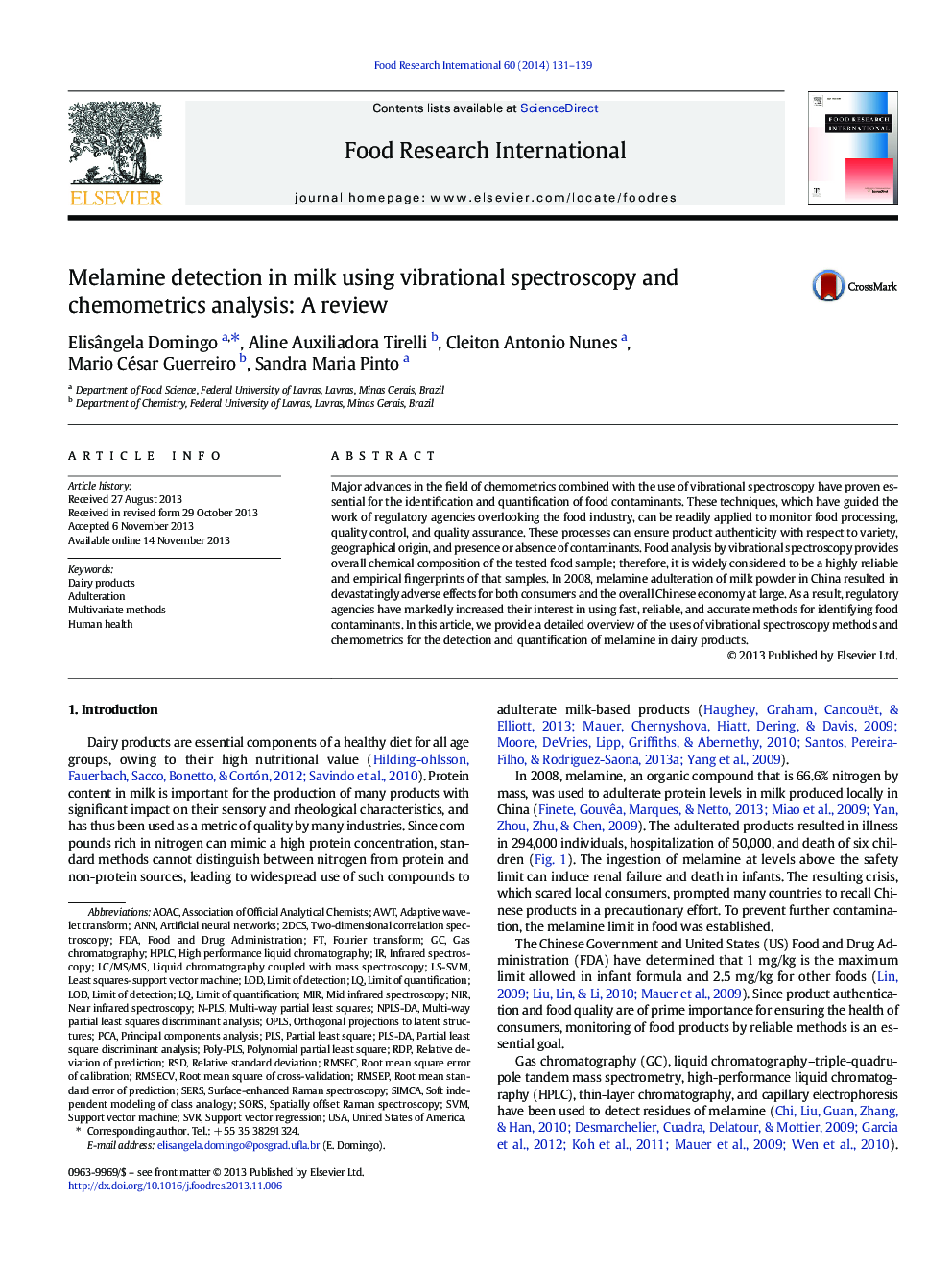| Article ID | Journal | Published Year | Pages | File Type |
|---|---|---|---|---|
| 6396482 | Food Research International | 2014 | 9 Pages |
â¢Vibrational spectroscopic and chemometric methods have been used to detect melamine.â¢Medium and near infrared spectroscopy showed the same efficiency in detecting melamine.â¢PLS is the chemometric method more used to analyze data from infrared spectroscopy.â¢Raman spectroscopy can be used to detect and quantify melamine.â¢Further studies using chemometric methods and Raman spectroscopy should be realized.
Major advances in the field of chemometrics combined with the use of vibrational spectroscopy have proven essential for the identification and quantification of food contaminants. These techniques, which have guided the work of regulatory agencies overlooking the food industry, can be readily applied to monitor food processing, quality control, and quality assurance. These processes can ensure product authenticity with respect to variety, geographical origin, and presence or absence of contaminants. Food analysis by vibrational spectroscopy provides overall chemical composition of the tested food sample; therefore, it is widely considered to be a highly reliable and empirical fingerprints of that samples. In 2008, melamine adulteration of milk powder in China resulted in devastatingly adverse effects for both consumers and the overall Chinese economy at large. As a result, regulatory agencies have markedly increased their interest in using fast, reliable, and accurate methods for identifying food contaminants. In this article, we provide a detailed overview of the uses of vibrational spectroscopy methods and chemometrics for the detection and quantification of melamine in dairy products.
